Which countries own the most gold?

Canva
Which countries own the most gold?
Open bank vault with gold bars.
The amount of gold in the world is finite—unlike the amount of money issued by countries’ central banks, which simply depends on those banks’ economic goals. So when the value of a dollar, pound, or euro drops, the corresponding value of gold rises. That makes owning gold a great way to prepare for times of economic uncertainty, and investors and national banks alike buy and hold gold for that reason.
SD Bullion analyzed global data on gold stockpiles from the World Gold Council as well as economic data from Trading Economics to illustrate the distribution of gold held by governments worldwide. World Gold Council data is recent as of the second quarter of 2023.
The United States has more than twice as much gold as is owned by the second-place country, Germany. The size of the country’s current reserves, just shy of 9,000 metric tons, reflects the fact that up through the early 20th century, gold was the standard currency of international trade and exchange—and that during both world wars, European nations bought supplies, weapons, and equipment from the U.S., paying for it with gold.
The U.S.-owned gold is stored in various secure locations around the country, including at Fort Knox, Kentucky, perhaps the most famous gold-storage facility in the world.
Germany, another longtime international trading power, has the second-highest amount of gold. In third place is the International Monetary Fund, which is not a nation, but rather a financial arm of the United Nations that works both to stabilize the global economy and to facilitate international trade. Nations that join the fund must pay into its coffers—and often do so with gold.
But there are other countries with plenty of gold on hand as well. Here are the nine that have the most, plus the IMF, for a global top 10 list. The percentage of national reserves represents how much of a country’s holdings of cash and other assets are in gold. Inflation data is the most recently available data as of August.
![]()

Canva
#10. India
Golden temple lit up at night.
– Gold in reserves: 879 tons
– Gold as a portion of national reserves: 8.2%
– Inflation rate: 6.8%

Canva
#9. Japan
Pagoda at Fuji mountain.
– Gold in reserves: 933 tons
– Gold as a portion of national reserves: 4.2%
– Inflation rate: 3.2%
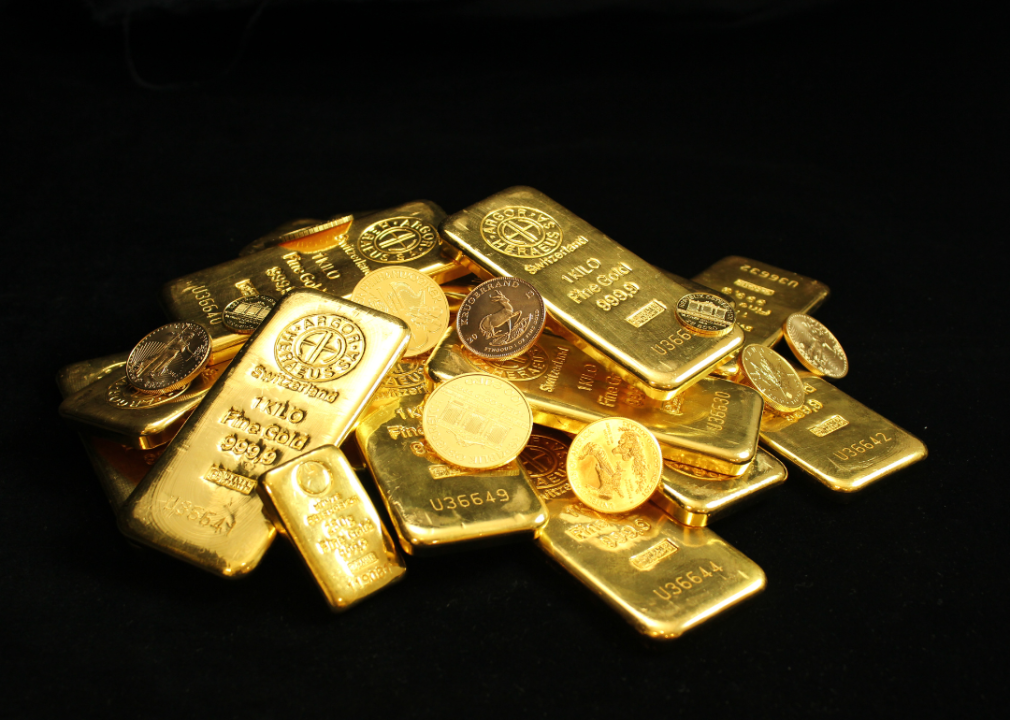
Canva
#8. Switzerland
A close up of Swiss gold bars.
– Gold in reserves: 1,146 tons
– Gold as a portion of national reserves: 7.4%
– Inflation rate: 1.6%
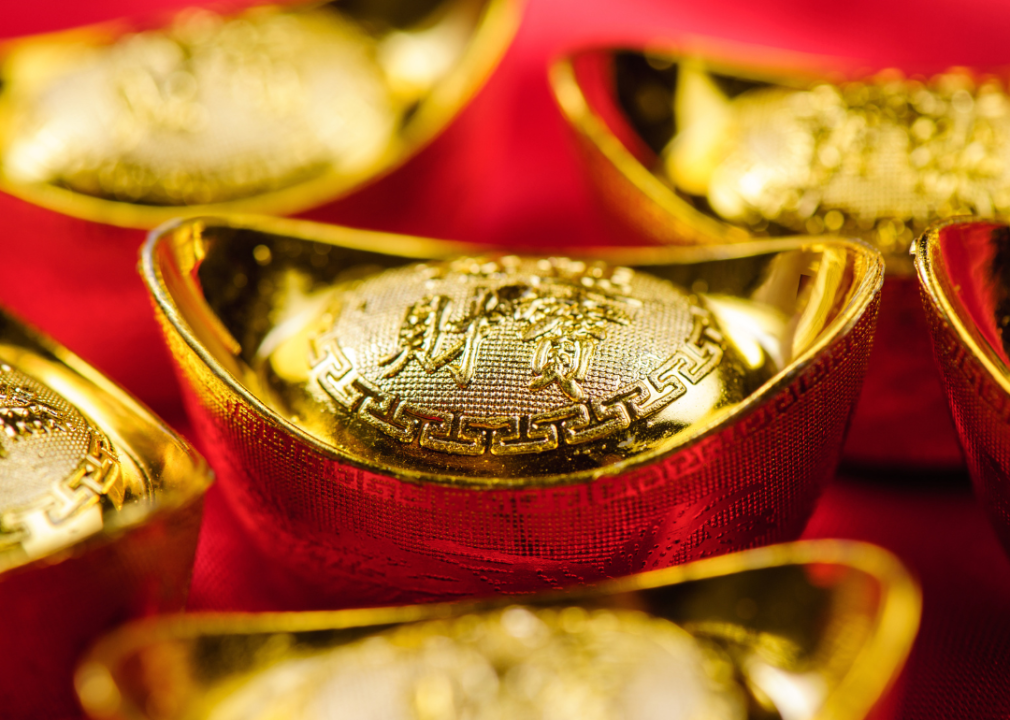
Canva
#7. China
Chinese gold ingot.
– Gold in reserves: 2,355 tons
– Gold as a portion of national reserves: 3.8%
– Inflation rate: 0.1%
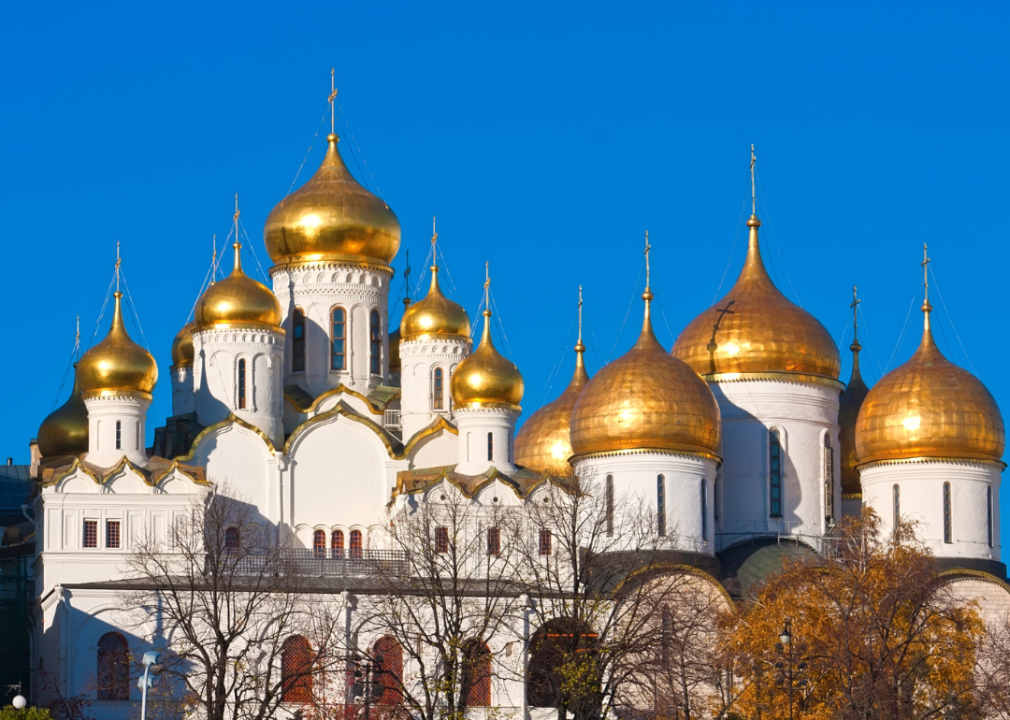
Canva
#6. Russia
Golden onion domes on top of white cathedral.
– Gold in reserves: 2,568 tons
– Gold as a portion of national reserves: 24.6%
– Inflation rate: 5.2%

Canva
#5. France
A building with a sign that reads “Banque de France”
– Gold in reserves: 2,686 tons
– Gold as a portion of national reserves: 66.3%
– Inflation rate: 4.9%
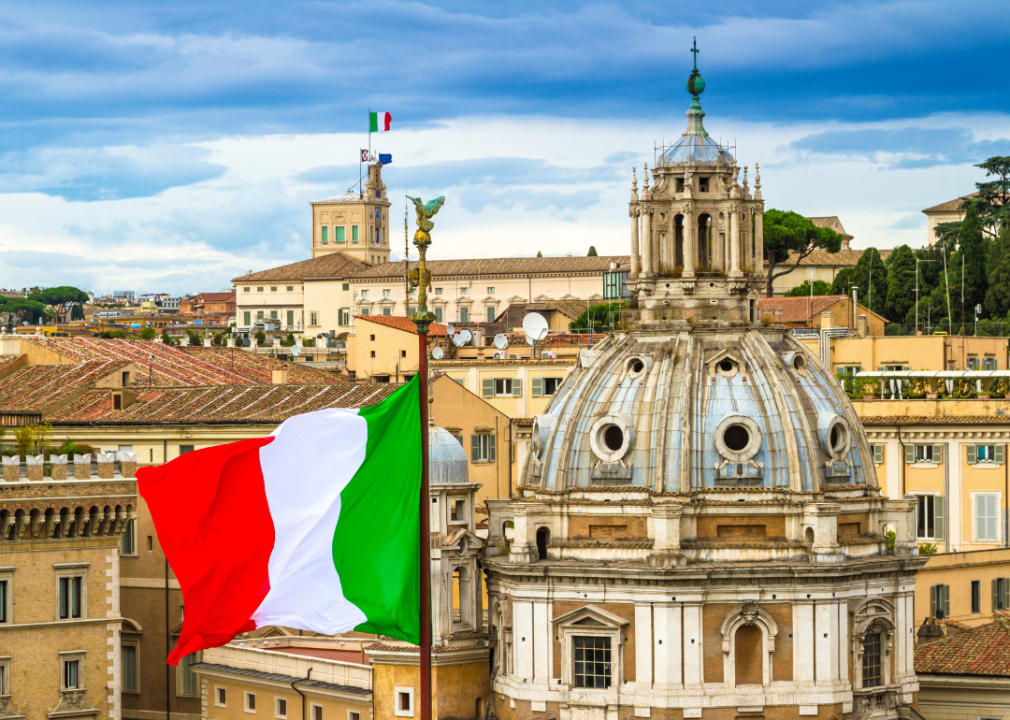
Canva
#4. Italy
Red, white and green flag flying in front of a dome.
– Gold in reserves: 2,703 tons
– Gold as a portion of national reserves: 64.4%
– Inflation rate: 5.4%
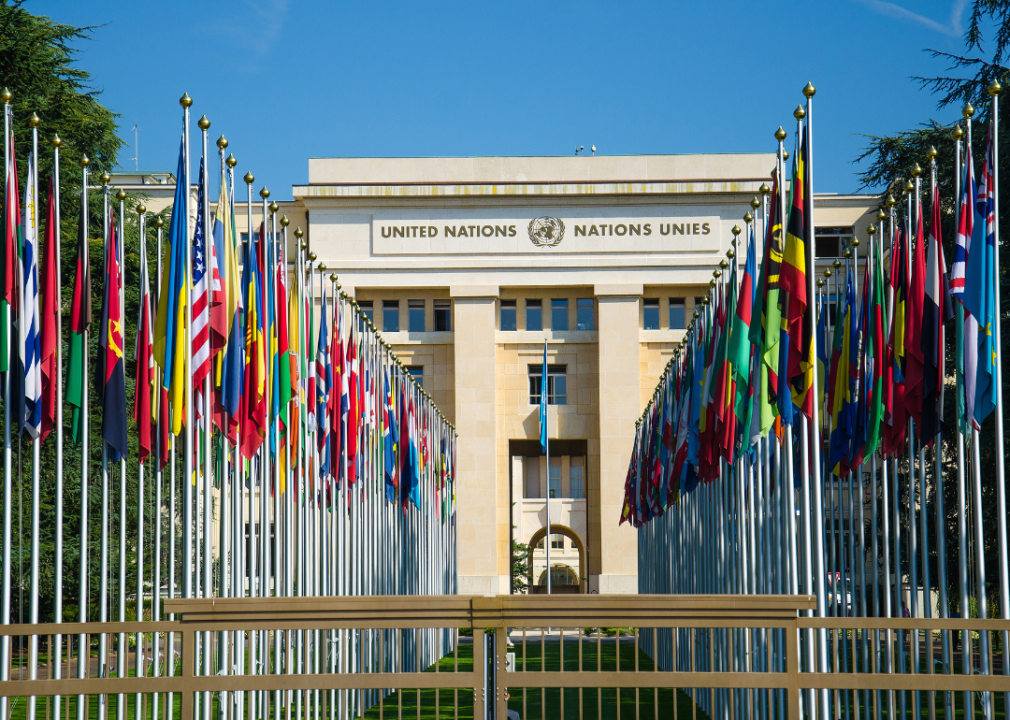
Canva
#3. International Monetary Fund
A row of flags in front of a building.
– Gold in reserves: 3,102 tons
– Gold as a portion of national reserves: N/A
– Inflation rate: N/A
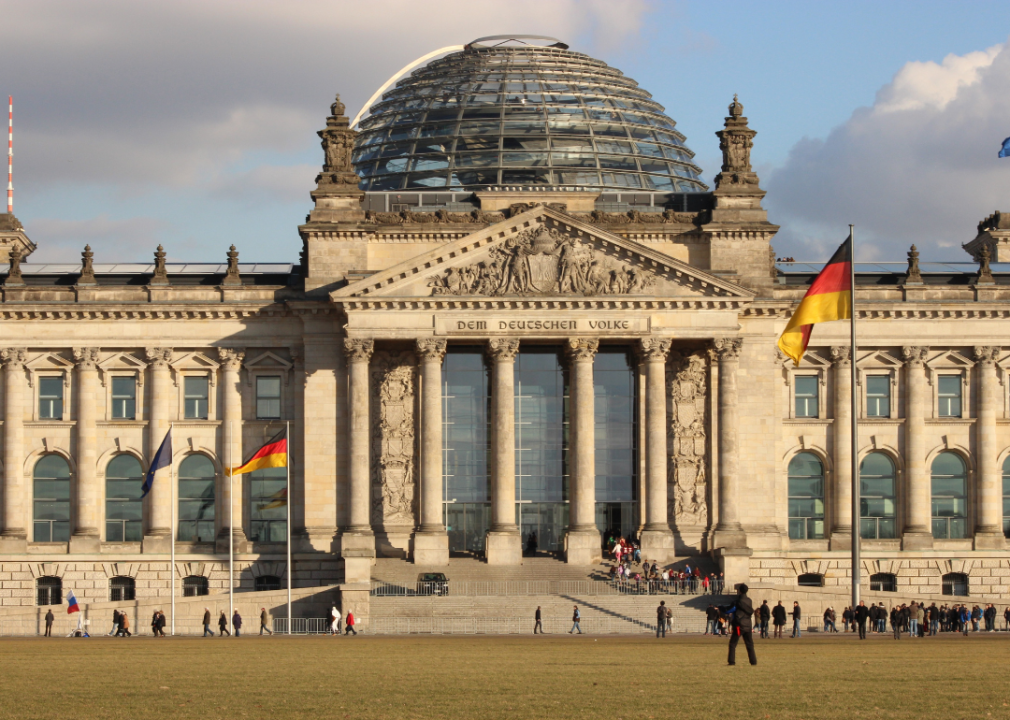
Canva
#2. Germany
A parliament building with a glass dome on top and columns.
– Gold in reserves: 3,696 tons
– Gold as a portion of national reserves: 67.4%
– Inflation rate: 6.1%
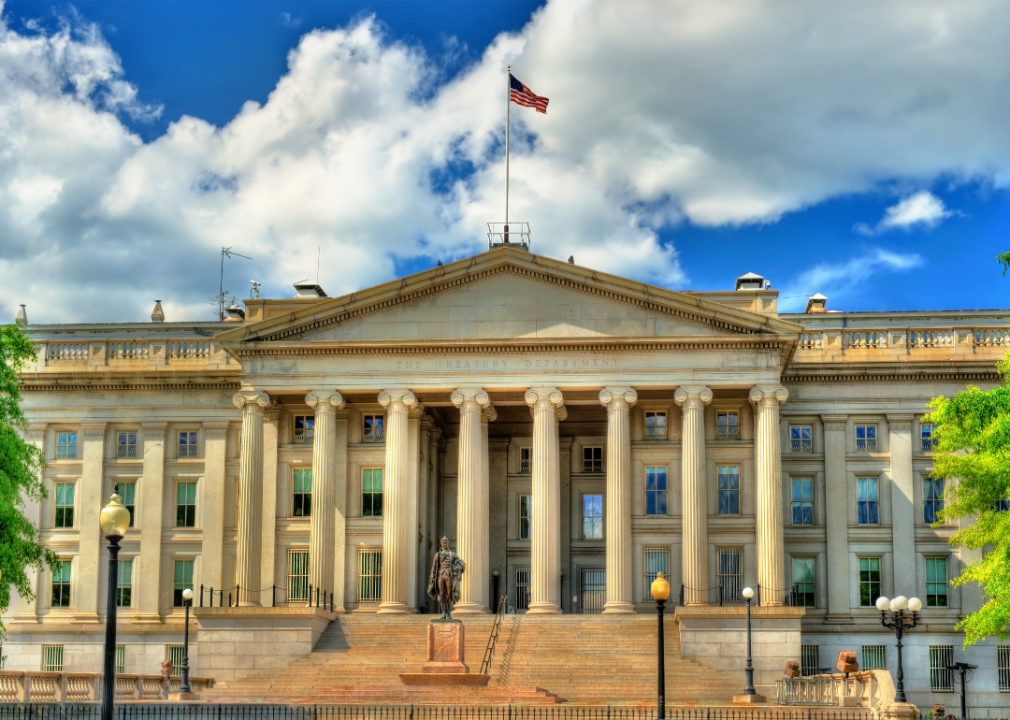
Canva
#1. United States
A large classical building made of limestone with a statue in front of it.
– Gold in reserves: 8,966 tons
– Gold as a portion of national reserves: 68.2%
– Inflation rate: 3.7%
Data reporting by Dom DiFurio. Story editing by Ashleigh Graf. Copy editing by Tim Bruns. Photo selection by Ania Antecka.
This story originally appeared on SD Bullion and was produced and
distributed in partnership with Stacker Studio.
